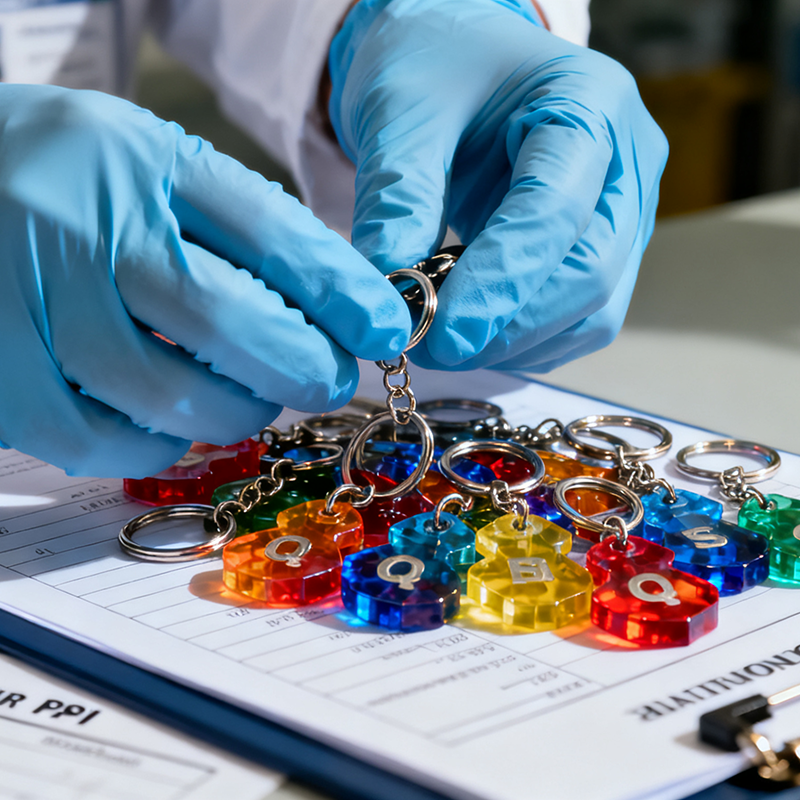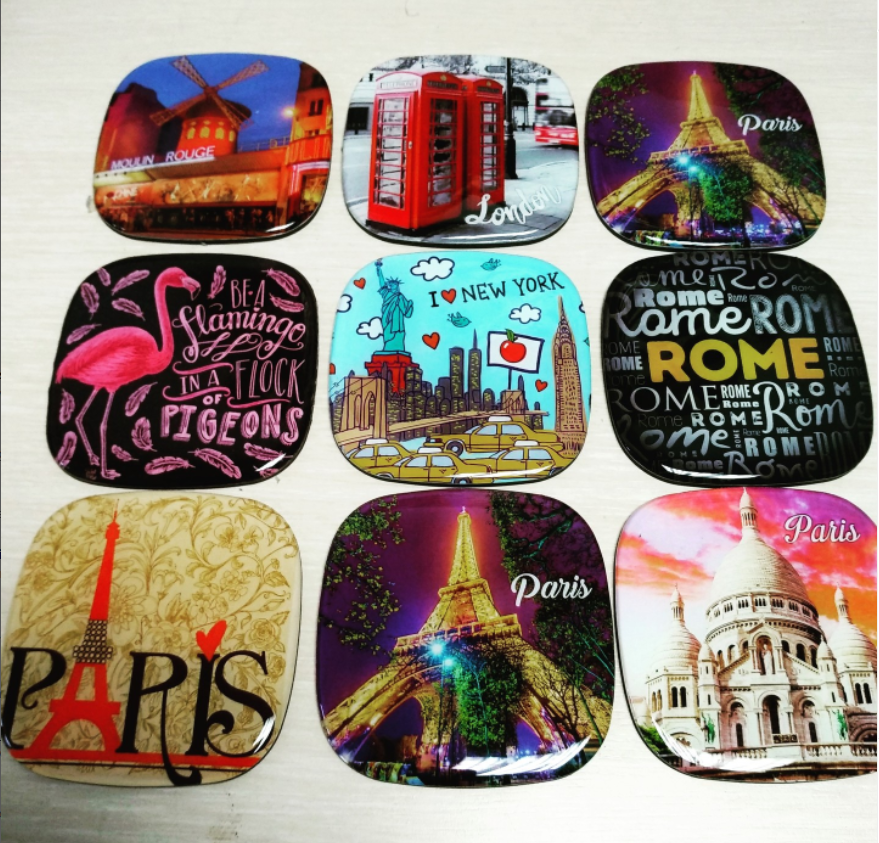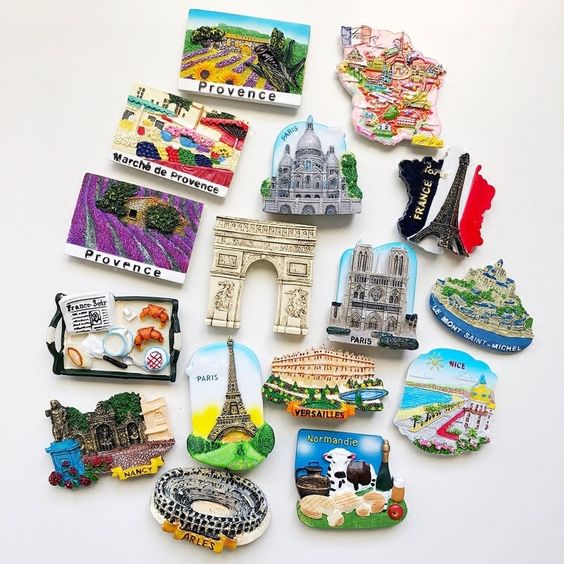The B2B Souvenir Inventory Paradox: When Price is Secondary to Punctuality
As an international importer, wholesaler, or brand retailer, you know the global souvenir market is projected to climb significantly, with experts estimating the sector will reach $45 billion by 2033, expanding at a Compound Annual Growth Rate (CAGR) of 5%. This growth, driven by traveler demand for authentic, personalized, and sustainable custom souvenir items , presents immense opportunity. However, it also amplifies the primary risk in the wholesale sourcing landscape: Inventory Visibility and the synchronization of supply with volatile seasonal demand.
The problem is the B2B seasonal sourcing paradox: the items with the highest demand spikes (like Fridge Magnets in August, correlating with peak summer travel , or ornaments for the holiday season ) are also the products that require the longest lead times for custom manufacturing and international logistics. Missing a peak sales window by even two weeks can obliterate annual profitability.
The core challenge for sophisticated souvenir importers is moving away from the reactive, spreadsheet-driven order management that plagues growing wholesale operations and establishing a proactive, process-driven inventory flow strategy. Successful B2B procurement today demands a pivot in focus: from securing the lowest FOB price to mitigating the catastrophic risks associated with regulatory non-compliance, quality failures, and, most critically, unreliable logistics.
This comprehensive guide, informed by a deep analysis of industry best practices and common wholesale sourcing pain points , details a three-phase “Skyscraper” strategy to help you master Seasonal Sourcing Strategies, guaranteeing your stock is on shelves when the tourist foot traffic hits its absolute peak.
Phase I: Predictive Planning – Forecasting and SKU Segmentation

The foundation of an optimized inventory flow is not a faster factory, but a smarter forecast. Before placing an order, B2B buyers must segment their inventory to align production schedules with genuine market spikes and the specific characteristics of the product line.
1. Segmenting the Seasonal Spikes: Summer vs. Q4
Not all seasonal products are created equal. We typically see two major consumption peaks that require distinct sourcing timelines:
- Summer Tourist Season (Q2/Q3 Peak): This period sees massive demand for low-cost, high-volume items that serve as immediate, spontaneous mementos. Souvenir magnets, postcards, and lightweight custom apparel dominate this window. To capture sales in August, product must clear customs and be distributed by late Q2/early Q3. This necessitates placing and finalizing orders early in Q1.
- Holiday & Gifting Season (Q4 Peak): This period focuses on higher-value, meaningful purchases. Ornaments (now collected year-round but spiking during holidays ), handmade jewelry, and custom corporate gifts are prioritized. The complexity of these items often means longer production runs, requiring orders to be locked in by late Q2.
This segmentation directly addresses one of the primary wholesale sourcing pain points: Inventory Visibility Issues. By defining product categories based on their lead time and peak profitability, you eliminate the guesswork.
2. The Strategic Inventory Segmentation Matrix
To maximize profitability and ensure stock availability, a high-level importer must differentiate between Peak Seasonal Volume (PSV) items and Year-Round Long Tail (YRLT) inventory. The strategy for sourcing these categories must be fundamentally different.
The following table provides a strategic breakdown, demonstrating how inventory segmentation is crucial for optimizing inventory flow and managing the capital expenditure of B2B stock:
| Category | Product Examples | Demand Pattern | Sourcing Strategy | Critical Lead Time Window |
| Peak Seasonal Volume (PSV) | Fridge Magnets, Postcards, Summer Apparel | Extreme Spike (Q2/Q3 for Summer; Q4 for Holidays) | High-volume, early commitment (Pre-book), leverage Value Engineering (VAVE) for stable cost | Production: Q1; Shipping: Early Q2 (for shelf arrival by July) |
| Year-Round Long Tail (YRLT) | Ornaments, Handmade Jewelry, Custom Keychains | Consistent, low-to-medium volume, less price sensitive | Flexible MOQ negotiation, Just-in-Time (JIT) replenishment, focus on quality/authenticity | Continuous production/shipping; maintain safety stock |
| Promotional/Corporate (B2B) | Custom Drinkware, Tote Bags (for events) | Event-driven, large single orders, less predictable | Rigorous Pre-Shipment Inspection (PSI) , focus on IP Protection and branding compliance | Depends on event date (requires firm, realistic lead times) |
3. Locking in Price Protection with Value Engineering
For high-volume PSV items, securing Price Protection is vital to maintaining margins against volatile commodity costs. This is where a manufacturer’s Value Engineering (VE) capability becomes a powerful asset.
Value Engineering (VE) should be applied during the initial design phase—often Q4 of the preceding year—to achieve the optimal balance between cost, functionality, and quality before mass production begins. By classifying components into core parts (high-cost) and long-tail parts (high-volume) , the manufacturer, acting as your strategic partner, can implement cost-reduction measures without compromising the final product’s quality, ultimately ensuring your custom souvenir inventory remains competitive well into the peak selling season.
Phase II: Production and Logistics De-Risking
Once the forecast is locked in and the design is cost-optimized, the focus shifts to ensuring predictable, uninterrupted inventory flow. This is where B2B manufacturers distinguish themselves from commodity suppliers through process maturity.
4. The Truth About Minimum Order Quantity (MOQ) Negotiation
The Minimum Order Quantity (MOQ) is a non-negotiable inventory management tool for manufacturers, ensuring customized and low-margin transactions remain profitable. However, for wholesalers launching new lines or navigating the unpredictable demands of peak tourist demand, a rigid MOQ can cripple cash flow.
The solution lies in transparency and collaboration. A reliable manufacturer will appreciate candor regarding your business challenges, inventory forecasts, and potential for sales growth. Instead of simply accepting a high MOQ, savvy souvenir importers should explore customized solutions like:
- Phased Deliveries: Breaking a large order into several smaller, timed shipments. This manages capital expenditure and inventory levels effectively for the importer.
- Alternative Packaging or Material Options: Sometimes, a small shift in material (e.g., from polyresin to a bio-resin formulation ) or packaging can reduce complexity and allow for a lower initial MOQ.
This collaborative approach transforms the MOQ from a hurdle into a tailored inventory flow strategy.
5. The Critical Role of Pre-Shipment Inspection (PSI) for Seasonal Goods
When inventory is time-critical (i.e., needed for the summer or holiday peak), any quality failure can lead to severe losses and missed revenue. Relying solely on the promise of meeting Acceptable Quality Limits (AQL) is insufficient.
A transparent supply partner must implement a stringent Pre-Shipment Inspection (PSI). This mandatory check involves:
- Random Sample Selection: Choosing products from different batches to represent the entire production run.
- Defect Checking: Meticulously inspecting samples for visible flaws, consistency in labeling, packaging, and adherence to specific product specifications.
- Meticulous Documentation: Recording all findings with detailed descriptions and photographic evidence.
If a quality issue is detected during a Q2 PSI for a summer shipment, there is a small window for remediation. If the PSI is delayed, the inventory—even if flawless—will miss the peak tourist demand. This operational discipline is a core indicator of supplier reliability and punctionality.
Phase III: Global Logistics and Financial De-Risking

The final phase involves managing the complex financial and regulatory hurdles of international shipping to ensure the seasonal inventory moves smoothly from the factory floor to your warehouse shelf.
6. Mastering the Total Landed Cost (TLC) for Predictable Margins
The accurate calculation of the Total Landed Cost (TLC) is paramount for B2B profitability, especially when dealing with high-volume seasonal goods. Wholesalers who only budget based on the Free On Board (FOB) price risk severe margin erosion.
The universally accepted TLC formula is: Product Cost + Shipping + Customs + Risk + Overhead. For seasonal custom souvenir imports, the ‘Customs’ and ‘Risk’ components are the most volatile and must be addressed early:
- Customs: This includes all import duties, tariffs, and brokerage fees. Accurate Harmonized Tariff Schedule (HTS) classification is vital here. Misclassifying resin crafts (which can fall under Epoxide Resins (HS Code 3907.30) or ‘Other articles of plastics’ (such as 3926.90.9985) ) is a common source of customs delays and unexpected duty charges. Providing official classification rulings to the manufacturer is a proactive de-risking step.
- Risk: This involves the cost of protecting the investment, including cargo insurance, required compliance testing, and the aforementioned QC/QA services.
By helping you factor in these costs early, a strategic manufacturing partner ensures budget stability and maximizes your final profit on the seasonal stock.
7. The Customs Clearance Checklist: Avoiding Terminal Delays
A delayed shipment is a lost seasonal opportunity. Customs clearance—required for both export at origin and import at destination —is often the final, fatal bottleneck. The complexity arises from the lack of a single global standard.
To ensure a smooth inventory flow, the manufacturer must be meticulous in preparing documentation. Importers require the following essential documents :
| Document | Purpose for Importer and Customs | Risk Mitigation |
| Commercial Invoice | Details the sale, product description, value, and Country of Origin. Used by Customs to calculate duties and taxes. | Ensures accurate duty calculation and payment, preventing unexpected holds. |
| Packing List | Provides precise details on contents, dimensions, weights, and packaging types. | Essential for freight forwarders to book carrier space and for physical customs inspections. |
| Bill of Lading (BOL) or AWB | The contract between the shipper and carrier. Required for physical release of goods. | Confirms the transport agreement and ownership transfer. |
| Certificate of Origin | Declares the manufacturing country. | Critical for compliance and determining applicable tariffs (e.g., U.S. tariff policies). |
Precision on these documents is non-negotiable; any discrepancy can lead to the goods being held up at the destination port, forcing your custom souvenir inventory to miss the peak demand window.
8. Contingency Planning: The Air Freight vs. Sea Freight Calculus
Even with optimal planning, unforeseen circumstances (carrier delays, unexpected tariffs , or border issues) can disrupt the timeline. A reliable supplier must offer robust contingency plans.
For high-value, low-volume, time-sensitive YRLT stock, air freight might be an immediate option to cover an inventory gap. However, for high-volume PSV items, air freight often erases the entire profit margin. A true partner will help the importer perform a Landed Cost calculation comparing standard sea freight vs. express air freight costs and timelines before an emergency arises, allowing for quick, data-driven decisions that minimize financial damage.
Key Takeaways and a Final Word on Partnership

Mastering Seasonal Sourcing Strategies is the key differentiator between a surviving wholesaler and a thriving international importer. The focus must shift from transactional purchasing to strategic, long-term partnership with a manufacturer that prioritizes process excellence, transparent communication, and logistical reliability.
By diligently executing the three phases outlined above—predictive forecasting with SKU segmentation, utilizing phased MOQ negotiation and rigorous PSI , and managing the financial risk through accurate Total Landed Cost analysis —you ensure your custom souvenir inventory is perfectly positioned to capture maximum revenue from peak tourist demand.
A manufacturing partner capable of offering these advanced services is not just a factory; they are an extension of your operational team, providing the Price Protection and inventory predictability that drives long-term Customer Retention and mutual Sales Growth.
- Crafting Your Brand’s Identity: The Power of Private Label & Custom Souvenirs - November 12, 2025
- Resin vs Ceramic for Bulk Souvenirs: A B2B Comparison of Cost, Durability, and Shipping Weight - November 5, 2025
- Strategic Content Roadmap: Positioning CraftMGF.com as the Global Authority in Custom Souvenir Sourcing - October 30, 2025




